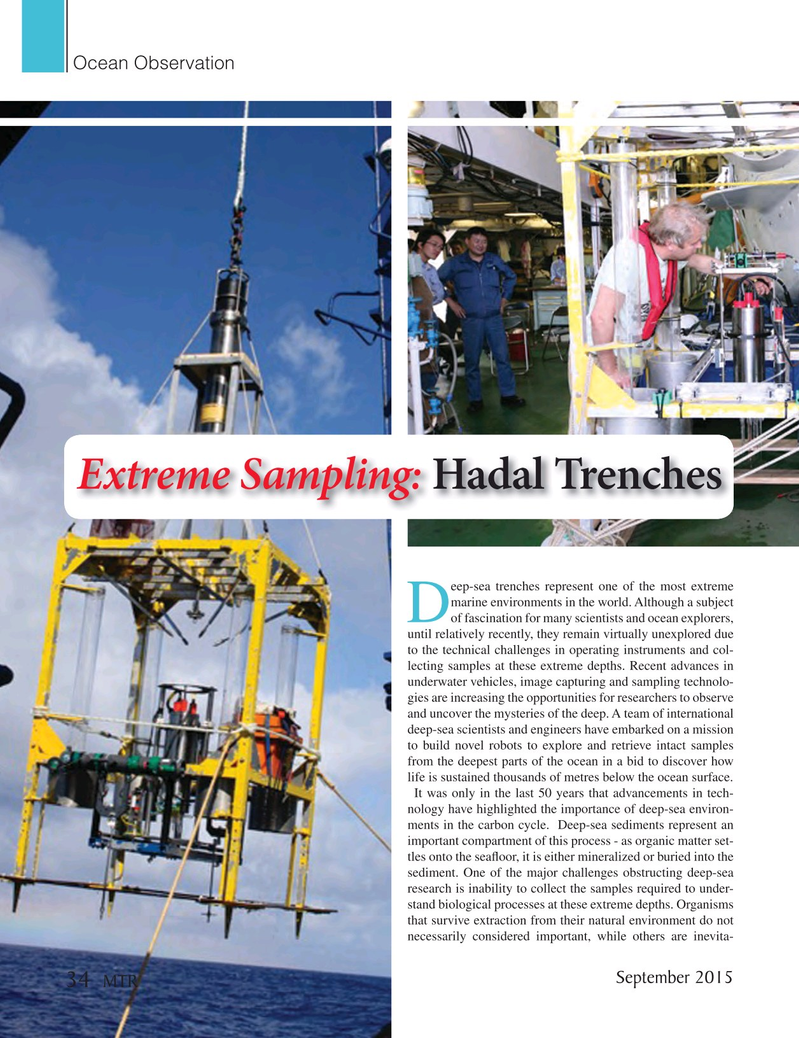
Page 34: of Marine Technology Magazine (September 2015)
Ocean Observation: Gliders, Buoys & Sub-Surface Networks
Read this page in Pdf, Flash or Html5 edition of September 2015 Marine Technology Magazine
Ocean Observation
Extreme Sampling: Hadal Trenches eep-sea trenches represent one of the most extreme marine environments in the world. Although a subject
Dof fascination for many scientists and ocean explorers, until relatively recently, they remain virtually unexplored due to the technical challenges in operating instruments and col- lecting samples at these extreme depths. Recent advances in underwater vehicles, image capturing and sampling technolo- gies are increasing the opportunities for researchers to observe and uncover the mysteries of the deep. A team of international deep-sea scientists and engineers have embarked on a mission to build novel robots to explore and retrieve intact samples from the deepest parts of the ocean in a bid to discover how life is sustained thousands of metres below the ocean surface.
It was only in the last 50 years that advancements in tech- nology have highlighted the importance of deep-sea environ- ments in the carbon cycle. Deep-sea sediments represent an important compartment of this process - as organic matter set- tles onto the sea? oor, it is either mineralized or buried into the sediment. One of the major challenges obstructing deep-sea research is inability to collect the samples required to under- stand biological processes at these extreme depths. Organisms that survive extraction from their natural environment do not necessarily considered important, while others are inevita-
September 2015
MTR 34
MTR #7 (34-49).indd 34 MTR #7 (34-49).indd 34 9/1/2015 11:21:40 AM9/1/2015 11:21:40 AM

 33
33

 35
35
